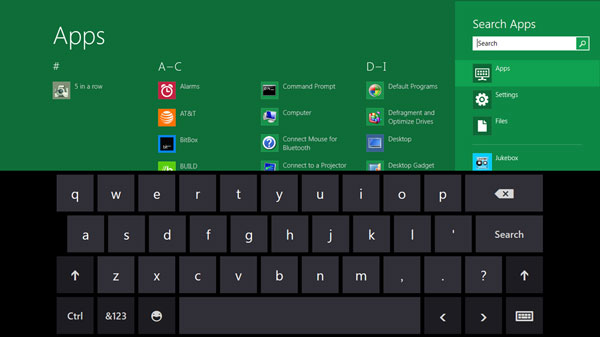Microsoft has taken the wrapping off its shiny new operating system Windows 8, revealing a re-imagined OS that is optimised for tablets and PCs, emphasises touch-first browsing and boasts full-screen apps, not to mention some snazzy power-saving capabilities.
The company also revealed that since Windows 7 was launched in October 2009, some 450m licences have been sold – working out at 650,000 licences being sold daily.
From perusing the new features, there are a few secret weapons already discernable – it will make devices instant-on and capable of running on a single charge and DirectX 11 gaming power could prove irresistible to app developers.
“We re-imagined Windows,” Steven Sinofsky, president of the Windows and Windows Live Division at Microsoft, said in his keynote address to the thousands of developers in attendance at the software giant’s BUILD conference for developers in Anaheim, California.
“From the chipset to the user experience, Windows 8 brings a new range of capabilities without compromise.”
Could Windows 8 herald a new age in personal computing?
New features include a “Metro style” user interface that is equally at home on a tablet computer or a mouse and keyboard.
A new feature called Touch-first browsing puts websites at the centre of new Windows 8 devices. And full-screen Metro style apps allow users to concentrate entirely on the apps they are using.
In addition, the new Windows 8 OS enables apps to work and communicate with each other. For example, users can select and email photos from different places, such as Facebook and Flickr or on their hard drives.
Born of the cloud, the new OS is also designed to work ‘live’ with cloud services, like SkyDrive, so documents, photos and other files are backed up in real time and accessible via any other device.
The company says the new OS is built on the foundation of Windows 7 ensuring a lower memory footprint and more room for apps.
The crucial test for Windows 8 will be, of course, the apps. How we consume software has fundamentally changed, thanks to Apple’s iOS ecosystem, so how will Microsoft make its mark and win back some esteem?
Well, firstly, the new OS will come with what will be called the Windows Store, which will allow developers to sell their apps wherever Windows is sold worldwide.
Microsoft may also have an ace up its sleeve in the form of DirectX 11 gaming technology, which will allow developers to build full-screen games and sell them as apps.
Windows 8: Turning the tables on hardware
From a hardware perspective, this is where things get really interesting. The new OS is designed to work across a multitude of computing form factors – tablets, ultrabooks, desktops, etc.
Microsoft says it is providing support for ARM-based chipsets, Intel x86 (as well as x32 and x64) devices, touch and sensors. “Windows 8 works beautifully across a spectrum of devices, from 10-inch tablets and laptops to all-in-ones, with 27-inch high-definition screens,” the company said.
Power management is going to be a big game changer in Windows 8 – ultrathin PCs and tablets will be able to turn on instantly and run all day on a single charge – while staying connected. In addition, next-generation system-on-a-chip technology support will enable extended standby and low-power states.
